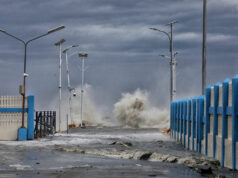Virus deaths top 5,000 as cases near 300,000
THE PHILIPPINE death toll from the coronavirus pandemic exceeded 5,000 on Tuesday, as infections rose to 291,789, according to the Department of Health (DoH).
Deaths rose to 5,049 after 50 more patients died, while recoveries increased by 450 to 230,643, it said in a bulletin. The agency reported 1,635 new coronavirus disease 2019 (COVID-19) infections.
There were 56,097 active cases, 86.4% of which were mild, 9.2% did not show symptoms, 1.3% were severe and 3.1% were critical.
Of the new cases, 583 came from Metro Manila, 102 from Cavite, 97 from Iloilo, 67 from Rizal and 57 from Cebu, the agency said.
Metro Manila had the highest number of new deaths with 20, followed by Western Visayas with 10, the Calabarzon region with eight and Central Luzon with four, it said.
Zamboanga Peninsula reported three, Cordillera Administrative Region had two, the Bicol region, Central Visayas and Bangsamoro Autonomous Region in Muslim Mindanao (BARMM) reported one each, DoH said.
More than 3.2 million individuals have been tested for COVID-19, the agency said.
Meanwhile, 13 hospitals will participate in the World Health Organization’s (WHO) so-called solidarity coronavirus vaccine trials, according to the Department of Science and Technology.
An inter-agency task force against the virus approved the agency’s zoning plan for the trials, Science and Technology Secretary Fortunato T. de la Peña said in a statement on Monday.
The 13 hospitals are located in eight zones where the vaccines will be tested, he said.
Nine of them are in Metro Manila — Philippine General Hospital, Manila Doctors Hospital, San Lazaro Hospital, Lung Center of the Philippines, St. Luke’s Medical Center-Quezon City, Research Institute for Tropical Medicine, Makati Medical Center, The Medical City and St. Luke’s Medical Center–BGC are.
Also included are Vicente Sotto Memorial Medical Center, Chong Hua Hospital in Cebu City, De La Salle Health Sciences Institute in Cavite, and Southern Philippines Medical Center in Davao City.
The Science and Technology department earlier said the areas had been picked based on their transmission rates.
The solidarity trials will start in October and is expected to be completed by the second quarter of next year, Mr. de la Peña said.
The Philippines has a deal with five vaccine developers to enable clinical data sharing, he added.
Ventilators developed by local groups are being tested at the agency, with three groups developing ventilators, it said.
Meanwhile, Vice President Maria Leonor G. Robredo said there is more to fighting the coronavirus pandemic than waiting for a vaccine and “spraying pesticides.”
“I think it’s not enough that just because we have a hospital, bed and funeral parlor, we only need to wait for a vaccine,” she said in a Facebook post late Monday.
This comes after President Rodrigo R. Duterte lashed out at the opposition including Ms. Robredo for criticizing the government’s response to the pandemic.
“They say we are not doing enough, what can we do with the virus that is flying around?” Mr. Duterte said in a recorded speech.
He said only a vaccine could solve the pandemic, adding that critics should instead ride a plane and spray pesticides all over the country, especially Manila.
Ms. Robredo said there the government must address “main challenges” amid the pandemic. The government should control the pandemic through “medical and non-medical interventions,” she added.
She also said the country could overcome humanitarian emergencies, including poverty, hunger, unemployment and mental distress by restructuring public and private finances and the whole economy “in an inclusive, resilient and sustainable way.”
Mr. Duterte has been faulted for his militaristic approach in containing the virus, instead of dealing with the health and economic aspects of the pandemic.
Defense Secretary Delfin Lorenzana, the head of the national task force had said the Philippines was seeking to flatten the curve by the end of September.
In epidemiology, the idea of slowing a virus spread so that fewer people need to seek treatment at a time is known as flattening the curve.
The curve researchers are talking about refers to the projected number of people who will get infected over time.
The coronavirus has sickened 31.5 million and killed about 970,000 people worldwide, according to the Worldometers website, citing various sources including data from the World Health Organization (WHO).
More than 23,000 people have recovered from the virus, it said.
It added that active cases stood at 7.4 million, less than 1% of which or 61,880 were either serious or critical, according to the website.
The United States had the most infections at more than seven million, followed by India with 5.6 million and Brazil with 4.6 million. The US also had the most deaths at 204,506, Brazil had 137,350 and India had 88,965.
Local coronavirus infections have slowed, while the country’s healthcare system has improved, the government said earlier this month, citing a study by researchers from the University of the Philippines.
Metro Manila, Batangas, Bulacan, Tacloban, and Bacolod are under a general community quarantine, while the rest of the country is under a more lax modified general community quarantine. Iligan City is the sole area in the country that is under a modified enhanced community quarantine. — Vann Marlo M. Villegas and Kyle Aristophere T. Atienza



